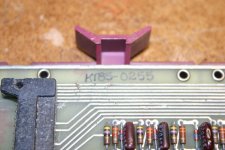daver2
10k Member
And why not!
You've done a marvellous job in bringing this machine back to life - so you deserve to enjoy it a bit. I am sure you will find that you want to expand it as time/money becomes available in the future.
Here are a few ideas if you have a parallel I/O card. The M863 is a parallel I/O card - but interestingly I can't find much information on it. Can you post a photograph of it?
https://www.youtube.com/watch?v=fj3fjYL_QsM
https://www.youtube.com/watch?v=B1MDYYvw0cY&nohtml5=False
Don't hesitate to post any more questions you have. It is always a pleasure to help out. But don't forget that envelope of luck you promised me in finding my own PDP-8!
Enjoy,
Dave
You've done a marvellous job in bringing this machine back to life - so you deserve to enjoy it a bit. I am sure you will find that you want to expand it as time/money becomes available in the future.
Here are a few ideas if you have a parallel I/O card. The M863 is a parallel I/O card - but interestingly I can't find much information on it. Can you post a photograph of it?
https://www.youtube.com/watch?v=fj3fjYL_QsM
https://www.youtube.com/watch?v=B1MDYYvw0cY&nohtml5=False
Don't hesitate to post any more questions you have. It is always a pleasure to help out. But don't forget that envelope of luck you promised me in finding my own PDP-8!
Enjoy,
Dave


